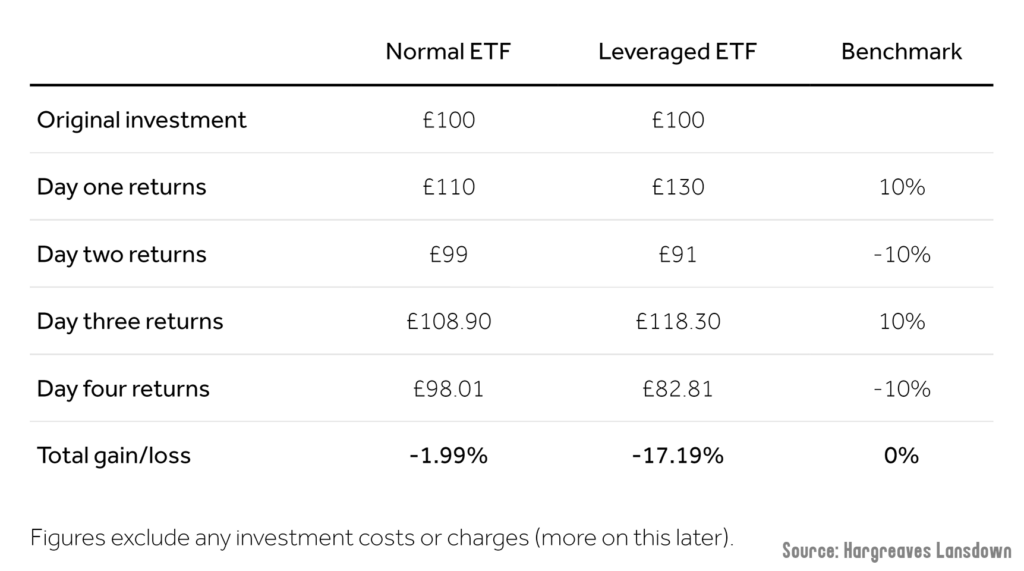Normally we prefer to focus on ways to get rich but before you can begin doing this you need to pay off your bad debt first. Quite frankly, becoming wealthy for most people is nothing more than a dream because statistically speaking they’re more likely to be struggling with debt.
Let’s kick-off by first looking at some of the terrifying UK debt statistics to put the debt problem into perspective: The average total debt per UK household in October 2021 was £63,000. Total unsecured debt per UK adult was just over £3,700 and the average credit card debt per household was almost £2,100.
People in the UK have personal debt at almost £1.75 trillion, up £60 billion from the year before, which is an extra £1,136 per UK adult over the year. The problem of personal debt is only getting worse.
Beyond the numbers, the biggest debt problem of all is the changing attitudes to debt; it has wrongly become acceptable! Past generations would shy away from debt, instead choosing to save first, and then buy. Today that’s been flipped on its head and it’s far too common to spend first and work out a way to pay for it later. In a nutshell debt has been normalised.
If other people want to be burdened by debt that’s their choice, but we want you to make the decision now that enough is enough. In this post, we’re going to lay out a 7-step plan that you should follow to pay off your harmful debts as fast as possible. Now, let’s check it out…
Alternatively Watch The YouTube Video > > >
Step #1 – Understand Your Debt
First off, you need to take stock of exactly how much you owe, who you owe it to, how much interest you’re being charged, and what the minimum payment is.
Literally draw up a table, so you can tally up the total amount owed and what the total minimum monthly payment is. You should be aiming to pay more than the very minimum or otherwise you could be paying off debt until what seems like the end of time, but we’ll calculate what you can afford to pay in a moment.
Step #2 – Draw Up A Monthly Budget
You absolutely need to understand what money you earn and what exactly you spend. Start with the obvious monthly costs that stay the same month-in, month-out. The bulk of your monthly spending is likely to be fixed (or consistent) such as the rent, energy, broadband, food, petrol or bus, and so on.
Then you need identify irregular or non-monthly expenses such as Christmas, holidays, clothes, and so on, and calculate an equivalent monthly figure for all of those, which you put aside each month into a separate account and can spend when the time comes.
It is these irregular or non-monthly expenses that cause most people to blow their budgets which is what forces them to go into debt in the first place. But irregular expenses shouldn’t come as a surprise; Christmas was on the 25th of December last year, and it will be on the 25th of December this year too.
For the time being, plug in your minimum debt payments into your budget, which should give you something like this:
Income: £2,500
Fixed Bills: £1,400
Irregular Expenses (Monthly Average): £400
Minimum Debt Repayment: £400
Other Spending £200
Surplus: £100
Bear in mind we’ve heavily summarised this for simplicity. In this example, we’ve got a surplus of £100, which should also be directed to clearing off that debt.
Step #3 – Cut Out The Fat
If you’re in debt, it’s highly likely that you won’t have a surplus in your budget and will in fact have a deficit. This needs to be corrected pronto! Even those with a surplus should follow this next step to speed up your debt repayments.
You need to cut out the fat, or in other words, cut unnecessary spending. You need to go full on ninja and slash everything you don’t need.
Go through your budget with a fine-tooth comb and identify which of your spendings are necessary and which are not. Holidays, eating out, coffees at Starbucks, nights out, expensive tv subscriptions are a thing of the past. Even the stuff you identified as something you need should be scaled back if you can.
We all need a roof over our heads, but if your debt’s really bad, might you move somewhere cheaper? Can you do the food shop in Aldi instead of Waitrose? Can you catch a bus instead of driving the car?
This might sound counterintuitive, but you may want to continue with one very low-cost entertainment expense such as Netflix or your PlayStation Plus subscription. People tend to spend a lot more when they’re bored so these can entertain you for next to nothing and help to prevent you spending more elsewhere. With some of the “free” PlayStation games I’ve literally clocked up hundreds of hours of gametime – and now it’s conformed… I’m a saddo.
By this point you should have a calculated plan to pay down the debt. If the maths isn’t working out, then you need to go back and be tougher with your cuts. If that’s not possible, there are still solutions to be found in the next steps.
Step #4 – Reduce The Interest Rate
It goes without saying that you want to pay as little interest as possible on your debt as slashing the interest rate will help you pay down the debt much quicker. Assuming lenders are still willing to lend to you, it might be a good idea to transfer whatever debts you can to a 0% credit card or cards.
There is a usually a small fee of around 2% from the new credit card provider but you could lock in 0% interest for maybe 2 years depending on what cards are available to you. The transfer fee is much cheaper than the 19% APR on a typical credit card.
Moneysavingexpert.com lists all the best offers and, in many cases, they can check your eligibility before applying to prevent any damage to your credit rating.
Another option you might want to consider is a debt consolidation loan. A debt consolidation loan is a type of loan that’s used to combine all your existing debts into one pot, so your debts become much easier to manage. The rates vary significantly between providers and on your personal circumstances. Technically, a debt consolidation loan is simply a personal loan, so you’re free to do whatever you want with the cash once received from the lender, but you’d be mad if you didn’t repay your existing debts.
Another option you may have is to shift the debts to your mortgage if you have adequate equity and can pass the mortgage provider’s affordability requirements. To do this you can borrow more on your mortgage and use the cash released to pay down the other (more expensive) debt. Mortgages tend to be extremely low cost – at time of filming rates are around 2% – and are also long-term, so provide you an opportunity to not have to take drastic lifestyle changes.
However, remember that because a mortgage is a secured debt, if you fail to make your mortgage payments you will be in danger of losing your home, so this last option should be considered very carefully.
Step #5 – Pay Off The Debt
There are a few different strategies you can use to pay down debts and they tend to cause disagreements within the finance community about which method is best.
On YouTube a lot of the content is dominated by American channels, and we don’t know if it’s different over there – we see no reason why it would be – but either way this next point doesn’t seem to get mentioned. Here in the UK, the first debts you should clear are your ‘priority debts’.
Priority debts mean that if you don’t pay, you could lose your home, have your energy supply cut off, lose essential goods or go to prison. They include things like: rent and mortgage, gas and electricity, council tax, and court fines. It’s important that you still make the minimum payments on your other debts whilst you clear these.
Once your ‘priority debts’ are sorted you need to tackle your other debts. The two strategies are the debt avalanche method and the debt snowball method. Both methods require you to make minimum payments on all but one of your debts.
The mathematically best way to clear the debt is the debt avalanche method, whereby you pay as much as you can on the one with the highest interest rate. The theory is that by concentrating on the one with the nastiest interest rate you pay your total debt down quicker by avoiding additional interest.
The debt snowball method ignores the maths and tells you to you pay down the smallest debt first and work your way up from smallest to largest, regardless of the interest rate. Advocates of this strategy argue that there is a psychological benefit to clearing the quantity of creditors you owe, and we think they have a point.
So, which is best? Well, that depends on you. Personally, we would always tackle the most expensive debt first if the interest rates varied significantly. Say you have one credit card charging 40% and a loan charging 10%. The credit card is going to be spiralling out of control if it’s not dealt with urgently, whereas the loan’s interest is far more reasonable.
Another contentious point is whether you should have an emergency fund if you’re in debt. Critics of debt such as Dave Ramsey over in the US argue that you need a $1,000 starter emergency fund before tackling the debt. This would be about £700 here in the UK. Some people would even argue that you need more than this as £700 won’t save you from many disasters.
Many people might struggle emotionally with this but as long as you have access to a credit card that isn’t already maxed out, then this kind of is your emergency fund in case something substantial comes up whilst you’re clearing your other debts. It doesn’t make financial sense to be paying say 20% on a credit card if you have some cash sitting there. If an emergency arises you can pay the 20% then and only then.
Step #6 – Make More Money
Cutting back and budgeting can only go so far. No matter how many times you have sliced and diced your budget, if the maths still doesn’t work, you need to grow your income instead. In fact, even if you’re not in debt you should be thinking about how to grow your income so you can move on to further financial goals like investing and retiring early.
Can you work extra hours? Dave Ramsey would be telling you to get a 2nd and 3rd job. If your debt is particularly bad this might be something to consider. But we prefer exhausting other avenues first such as getting better paid work for the hours you currently spend working.
Speak to your boss and see if there are opportunities for a promotion or added responsibilities. This might not be achieved overnight but let the world know your intentions. Alternatively, it’s quite often the case that it’s easier to promote yourself by simply switching employer.
Or, if you want more control you should think about setting up a side hustle to bring home some extra bacon. Somebody I know restores antique furniture and sells that on Etsy. Someone else used to buy women’s shoes from car boots and resell on eBay, and someone else did wedding photography. It could literally be anything.
Our favourite side hustle we like to promote is matched betting because you can do it with no skills, and you can quite easily make hundreds of pounds or more a month tax free (the amount you make is heavily determined by how much time you put in) – enough perhaps to allow you to start saving more for your future.
Matched betting is a betting technique that covers all outcomes of a bet, which unlocks very lucrative bookies’ free offers, which is how you make the money. Whilst it involves using gambling sites, because you have covered every outcome you can’t lose as long as you follow the instructions precisely. Visit our Matched Betting page for more info and videos. There you’ll also find discounted offers for the required software.
Step #7 – Get Help
If after all this, you still can’t stop drowning in debt then it’s time to get help. Moneyhelper.org, which has replaced the Money Advice Service, has a list of free debt advice services, which we’ll link to below. From what we’ve heard on the grapevine stepchange.org is particularly good, so please do check them out if you need help.
What other tips can you give to help those trying to get out of debt? Join the conversation in the comments below.
Written by Andy
Featured image credit: SB Arts Media/Shutterstock.com
Also check out the MoneyUnshackled YouTube channel, with new videos released every Wednesday and Saturday:





